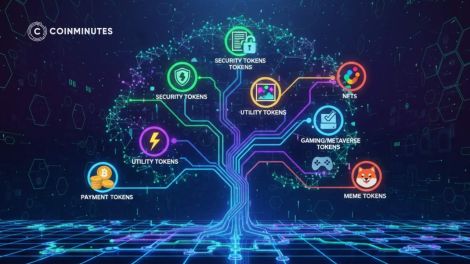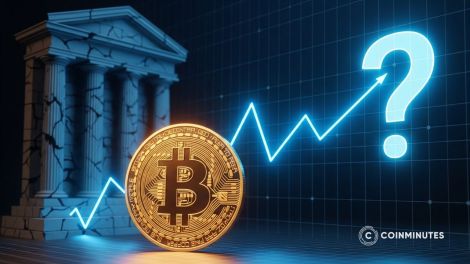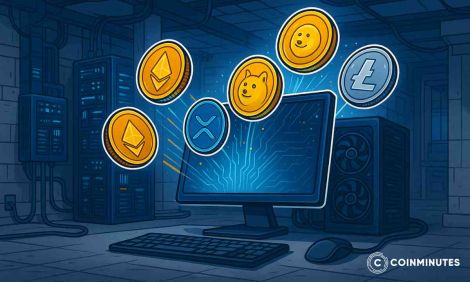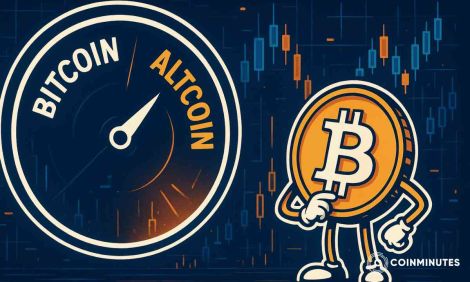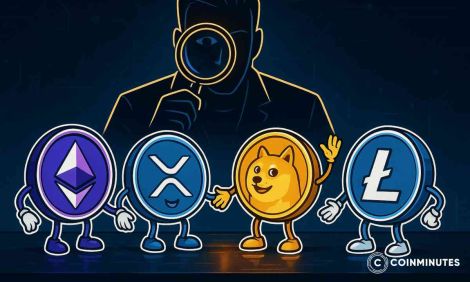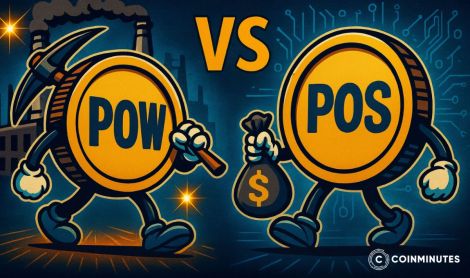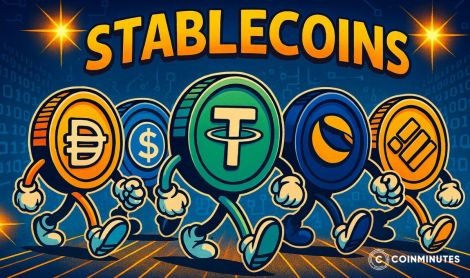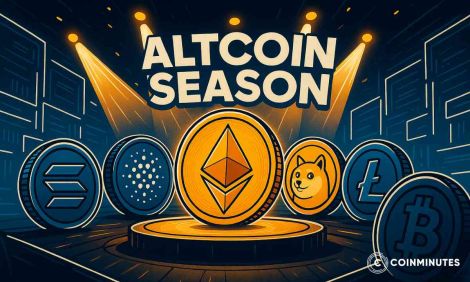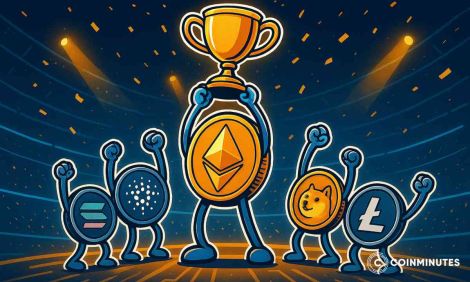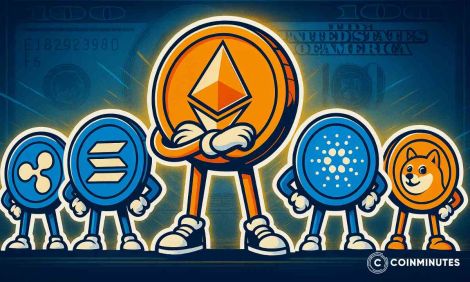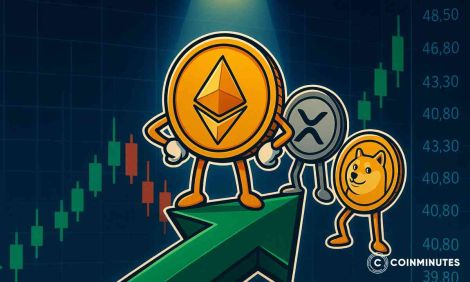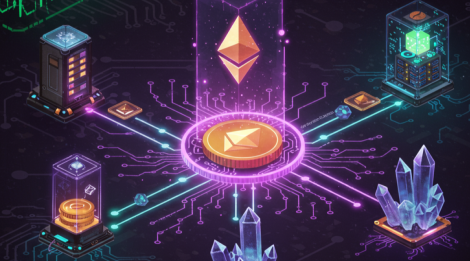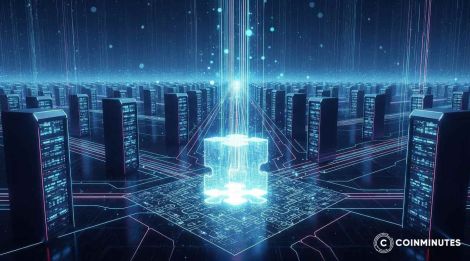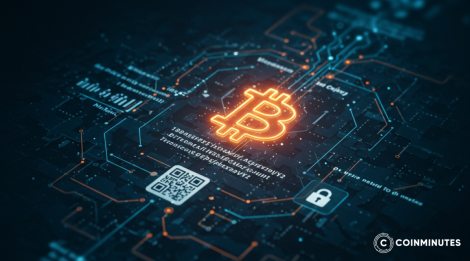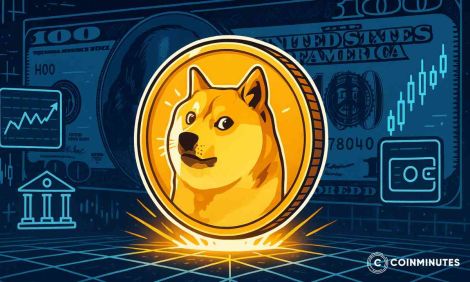Everything About Ethereum (ETH): How ETH is Revolutionizing the Crypto World
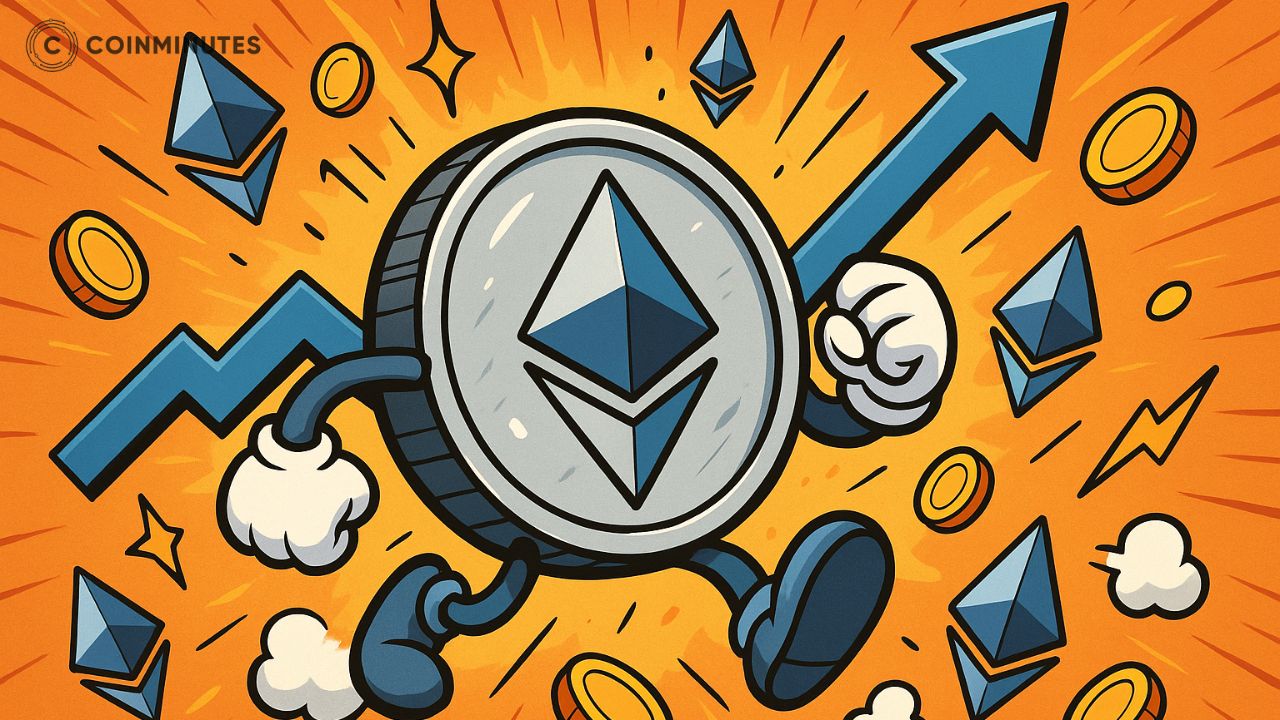
Bitcoin is something you may have heard of. But I am quite sure that you have also heard of Ethereum. It is the other big one in the crypto world but most people find it a lot more confusing. Is it just another coin? Why are the fees so high?
At CoinMinutes we understand. The confusion comes from the fact that Ethereum is not just "digital money". It is something far bigger: a worldwide, decentralized computer that is open to anyone to create new kinds of applications.
This is the guide where we explain to you exactly what Ethereum is, how it works, what you can do with it, and where it might be going. We will not use the jargon that is hard to understand but rather stick to plain English.
Definition of Ethereum
The first thing you have to get right is the difference between Ethereum and Bitcoin. I think this is the key that unlocks everything else.
Bitcoin is "digital gold." It's a simple, secure network designed to do one thing and do it perfectly: be a decentralized store of value and a payment system that no one can control.
Ethereum is "digital oil." It's a complex, flexible network designed to be a platform for running code. It's a decentralized world computer that developers can use to build and deploy unstoppable, global applications.
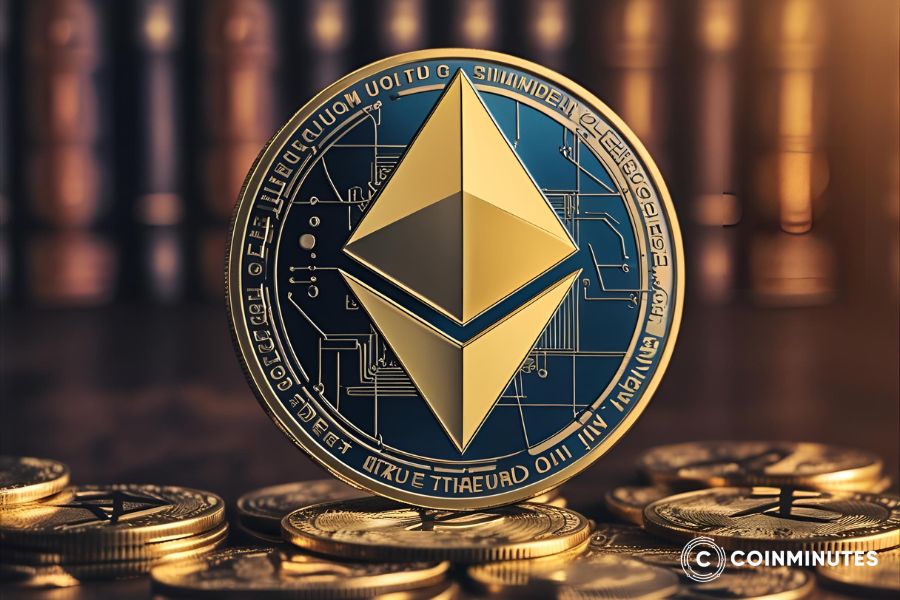
So, when you hear "Ethereum," you should think of the network itself—the whole global system. The coin that runs on that network is officially called Ether, or ETH. We all just call it "Ethereum" for short, which adds to the confusion, but the distinction is important. You don't "invest in the internet," you invest in companies that build on it. With Ethereum, you can actually invest in the network's native asset (ETH), which is used to pay for all the activity on that network. This is what makes ETH valuable: it's the "gas" (or oil) that powers the entire Ethereum economy.
How Does Ethereum Work?
So, how does this "world computer" actually run? It's not one single machine. It's a network of thousands of computers (called "nodes") all over the world, all running the same software and all holding a copy of the same public ledger, the blockchain.
The Ethereum Blockchain Explained
Just like Bitcoin, the Ethereum blockchain is a shared, unchangeable public database. It's a digital ledger book that records every single transaction, from a simple "Alice pays Bob 1 ETH" to a complex interaction with a financial app. This ledger is bundled into "blocks" of data, and each new block is cryptographically linked to the one before it, creating a "chain" of blocks. Once a transaction is in that chain, it's pretty much impossible to change or remove. This immutability is what provides the trust.
Smart Contracts
This is the core concept that makes Ethereum special. Smart contracts are the reason Ethereum exists.
A smart contract is just a program, a bit of code, that's stored on the blockchain. The "smart" part is that it automatically runs when certain conditions are met. The classic (and maybe overused, but good) analogy is a high-tech vending machine.
-
With a vending machine: You (1) put in $2.00, (2) press button "B4". (3) The machine's code runs and checks "IF money = $2.00 AND button = B4, THEN drop the snack."
-
With a smart contract: A freelancer and a client can have a contract that says "IF freelancer submits the work to this address AND the client marks it as 'complete', THEN automatically release the 5 ETH from escrow to the freelancer's wallet."
No invoices, no waiting 30 days, no "check's in the mail." It just happens. This is what allows developers to build complex apps—we call them dApps (decentralized apps)—for things like finance, gaming, and social media without needing a middleman or a central company to run things. We at CoinMinutes think this is the core of its value.
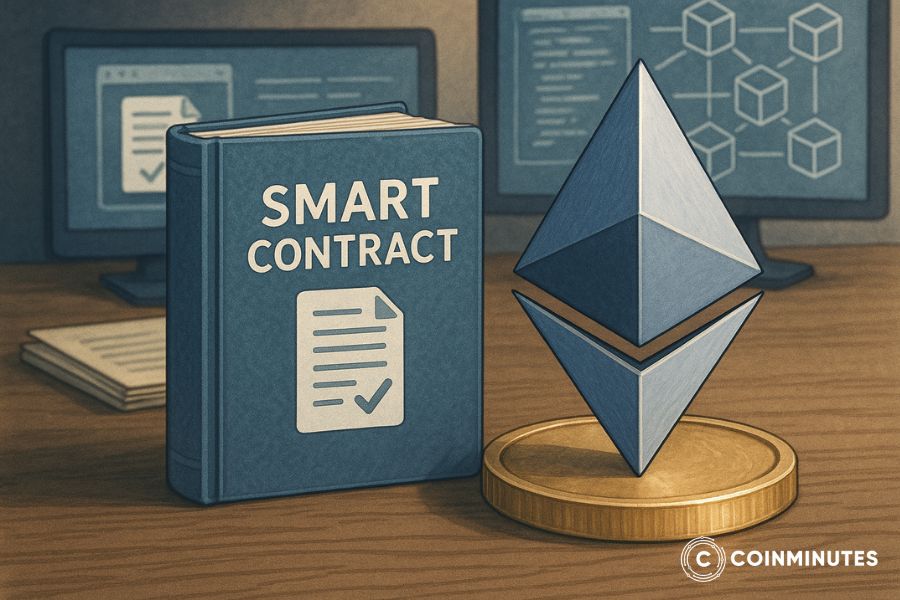
Ethereum Virtual Machine (EVM)
The Ethereum Virtual Machine (EVM) is the "brain" of the whole operation. It's the operating system for this world computer. The EVM is the part of the software that lives on every node and is responsible for actually running the smart contract code.
When a developer writes a smart contract in a language like Solidity (which is similar to JavaScript), that code is compiled down into instructions that the EVM can understand. Because every node on the network is running the same EVM and processing the same contracts, they all independently arrive at the same result. This is what keeps the entire network in sync. The EVM is what makes Ethereum a programmable blockchain. In my opinion, it's the most important piece of the whole puzzle.
Gas Fees
Alright, let's talk about the elephant in the room: gas fees.
If the EVM is a computer, "gas" is the fee you pay to make it run your code. Every single action on Ethereum, from a simple transfer to a complex trade on a DeFi app, requires a certain amount of computational effort. This effort is measured in "gas."
The "gas fee" is the total price you pay, in ETH, to have the network process your transaction. This fee goes to the "validators"—the people running the computers that secure the network—as a reward for their work.
Here's why it gets so expensive: the Ethereum main chain is like a busy, single-lane highway. It can only handle a certain number of cars (transactions) at once. When a new NFT project drops or there's a lot of market panic, everyone tries to get their transaction through at the same time. This creates a massive traffic jam.
To get in the fast lane, you have to outbid everyone else by paying a higher gas fee. I've personally paid over $100 for a single simple transaction during the peak of the 2021 bull run. It was painful, and it's Ethereum's single biggest problem. This problem, however, is what led to the rise of Layer 2s, which we'll get into later.
The History and Evolution of Ethereum
Ethereum's journey has been a wild, dramatic, and fascinating story. It wasn't just handed down from the heavens; it was built by a group of brilliant, and sometimes clashing, personalities.
The Visionaries
The core idea for Ethereum was first proposed in a whitepaper in late 2013 by a 19-year-old programmer named Vitalik Buterin. I find this part of the story amazing. He was deeply involved in Bitcoin, but he felt that Bitcoin's scripting language was too simple. He had an idea for a blockchain that could run any kind of program.
He shared this idea, and it attracted a group of other brilliant minds who became the co-founders. This group included Dr. Gavin Wood (who wrote the first technical implementation and invented the EVM and the Solidity language), Charles Hoskinson (who later went on to found Cardano), and Joseph Lubin (who founded ConsenSys, a major Ethereum software company). This "founding team" raised money in a 2014 online crowdsale, selling the first ETH tokens to the public to fund the network's development.

Major Milestones
The first live version of the Ethereum network, "Frontier," launched on July 30, 2015. It was a very basic, bare-bones version, but it worked. The real fireworks started in 2017 with the ICO (Initial Coin Offering) boom.
Thanks to a token standard called ERC-20, Ethereum made it incredibly easy for anyone to create their own crypto token. This led to a gold rush. Thousands of projects wrote up a whitepaper, created a token, and raised millions of dollars from the public in minutes. It was a crazy, chaotic, and completely unregulated time. Most of these projects were junk or outright scams and failed spectacularly. But that chaos was important. It was the first major stress test for Ethereum, and it proved that the platform was a powerful tool for raising capital and launching new ideas.
Hard Forks & Upgrades
Like any software, Ethereum needs to be upgraded. In the blockchain world, a major upgrade is called a "hard fork." The most famous and most controversial fork in Ethereum's history happened in 2016, right after a project called "The DAO" was launched. The DAO was a new kind of organization—a decentralized venture fund with over $150 million worth of ETH, all controlled by smart contracts.
Then, a hacker found a bug in its code and started draining all the money.
This was a crisis. The community was faced with a terrible choice:
-
Do nothing and let the hacker keep the money, honoring the idea that "the code is law."
-
Perform a hard fork to rewrite the blockchain's history and reverse the hack, essentially bailing out the investors.
In my opinion, this was the most important moment in Ethereum's history. The majority of the community, including Vitalik Buterin, voted for option 2. They forked the network to get the money back. The small minority who believed that the chain should never be altered, no matter what, refused to upgrade. They continued on the original, un-forked chain, which still exists today as Ethereum Classic (ETC). The main network that we all use became the new Ethereum (ETH).
Ethereum 2.0 (The Merge)
For years, the biggest problem with Ethereum was its environmental impact. It used the same Proof of Work (PoW) system as Bitcoin, which required a massive amount of electricity. The developers had long planned to switch to a more efficient system called Proof of Stake (PoS).
This upgrade was called "The Merge," and it finally happened on September 15, 2022.
This was, in my view, the most impressive technical achievement in crypto history. They essentially swapped out the engine of a multi-hundred-billion-dollar network while it was still running. The transition was seamless, and the results were instant. According to the Crypto Carbon Ratings Institute (CCRI), this single upgrade cut Ethereum's energy consumption and carbon footprint by over 99.95%. It was a massive win for the network's long-term sustainability and a huge response to its loudest critics.
Core Features of Ethereum
So what makes Ethereum... well, Ethereum? It's a combination of a few key features that set it apart.
Decentralization & Security
Like Bitcoin, Ethereum is decentralized. It's run by a global network of participants, so no single person, company, or government can shut it down or control it.
Its security model is now Proof of Stake. Instead of "miners" burning energy, the network is secured by "validators." To become a validator, you have to deposit (or "stake") at least 32 ETH as collateral into a smart contract. These validators are then randomly chosen to propose new blocks and check the work of other validators. They get paid in ETH for doing this job honestly. But here's the stick: if you try to cheat the system or are just lazy and let your node go offline, the network can automatically punish you by "slashing"—destroying some of your 32 ETH collateral. This is a powerful economic incentive to play by the rules.

Programmability
This is Ethereum's superpower. As I mentioned, the EVM and smart contracts make Ethereum a programmable blockchain. This means it's not just a payment ledger; it's a platform for creating. Developers can build entire applications—games, financial services, social media, art markets, voting systems—that are owned by no one, run on this global computer, and can't be censored. This is the feature that has attracted the largest developer community in all of crypto.
Interoperability & Layer 2 Scaling Solutions
Ethereum's popularity is its own worst enemy, leading to those sky-high gas fees. The community's solution to this is a whole new ecosystem of Layer 2 (L2) scaling solutions.
Think of the main Ethereum blockchain (Layer 1) as a very secure but very slow and expensive highway. A Layer 2 is like a new, super-fast express toll lane built on top of it.
Projects like Arbitrum, Optimism, and Polygon are L2s. They process thousands of transactions in their own fast and cheap environment and then post a compressed, "rolled-up" summary of those transactions back to the main Ethereum chain. This way, they get to "inherit" the security of the main chain while being ableEto offer transactions that cost just a few cents. I personally do almost all of my DeFi activity on these L2s now. It's just not practical for me, or most people, to pay mainnet fees anymore.
Developer Ecosystem & Community Strength
This is, in my opinion, Ethereum's deepest and most powerful "moat." It has thousands of active developers, more than any other blockchain by a huge margin. It has the best developer tools, the most code libraries, the most tutorials, and the biggest user base.
This creates a powerful network effect:
-
Smart developers build on Ethereum because that's where all the users are.
-
They build cool new apps.
-
Those cool apps attract even more users.
-
This larger user base makes Ethereum even more attractive to the next wave of developers.
This cycle is very, very hard for a competitor to break. In fact, many on our CoinMinutes team believe this network effect is Ethereum's single greatest strength.

Environmental Impact
I have to restate this because it's so important. Before The Merge, Ethereum's energy use was a real, valid, and massive problem. It was a huge black eye for the industry.
After The Merge, that problem is gone. The switch to Proof of Stake makes Ethereum a green, sustainable technology. This move wasn't just good PR; it was essential for the network's future. It makes it a much more acceptable platform for large, environmentally-conscious companies and institutions to build on and invest in.
Use Cases & Real-World Applications of Ethereum
So what are people actually building with this world computer? This is where it gets really exciting.
Decentralized Finance (DeFi)
DeFi is by far the biggest and most successful use case for Ethereum. It's an entire parallel financial system being built with smart contracts, no banks needed. I like to call it "money Legos" because you can stack different protocols together to create new financial products.
-
Decentralized Exchanges (DEXs): These are platforms like Uniswap. They let you trade any crypto token directly from your own wallet, 24/7, with no company or central order book in the middle.
-
Lending & Borrowing: Protocols like Aave and Compound are like autonomous banks. You can deposit your crypto and earn interest, or you can use your crypto as collateral to take out a loan, all in about 30 seconds.
-
Stablecoins: The majority of major stablecoins, like USDC and DAI, live on Ethereum. They are the essential "cash" of the DeFi economy, letting you hold a stable dollar-pegged value.
NFTs & Digital Art
Non-Fungible Tokens, or NFTs, are the second massive use case. An NFT is just a digital certificate of ownership for a unique item, whether it's a piece of art, a collectible, or an in-game item. The ERC-721 token standard on Ethereum was the blueprint for this.
The 2021 NFT boom was, for me, the first time I saw crypto really cross over into mainstream culture. Suddenly, artists, musicians, and big brands like Nike and the NBA were using Ethereum to create and sell digital goods. It proved that the "digital ownership" idea had real-world appeal.

DAOs & Governance
A Decentralized Autonomous Organization (DAO) is another powerful idea. It's basically an "internet club with a shared bank account." A DAO is a community that forms around a specific goal, and its treasury is controlled by a smart contract. The members use governance tokens (like UNI for Uniswap) to vote on proposals for how to spend that money. It's a new, transparent way to run an organization or a company.
Enterprise Ethereum
It's not just for crypto-anarchists. Many massive, a-list corporations are quietly using Ethereum's technology. The Enterprise Ethereum Alliance (EEA) includes members like Microsoft, J.P. Morgan, and Intel. They use private, permissioned versions of Ethereum's software to build solutions for things like supply chain tracking, international trade finance, and settling internal payments. They love the trust and immutability of a blockchain without having to operate on a public network.
Investing in Ethereum
Ether (ETH) is a globally recognized asset, but investing in it is a very different proposition than buying a stock or even buying Bitcoin. You have to understand what you're buying, the risks, and how to keep it safe.
Why Invest in Ethereum?
When you buy ETH, you're not just buying a coin; you're betting on the growth of the entire Ethereum network. In my view, the investment thesis for ETH is multi-layered:
-
It's a "Digital Commodity": You need ETH to pay "gas" for every single action on the network. If you believe more and more people will use dApps, they will need more and more ETH to pay for those transactions. This creates a constant, organic demand for the asset.
-
It's a "Store of Value": Some people see ETH as a form of "digital gold" 2.0.
-
It's a "Productive Asset": Since The Merge, you can "stake" your ETH to help secure the network. In return, you get paid a yield in new ETH. This makes ETH like an interest-bearing bond.
-
It's a "Bet on Web3": Ultimately, holding ETH is a broad bet on the success of the entire decentralized internet. If you think DeFi, NFTs, and DAOs are the future, then ETH, as the primary platform for all of them, is well-positioned. This is the point we at CoinMinutes find most compelling.

How to Buy, Sell & Store ETH Securely
ETH is one of the easiest cryptos to buy. You can get it with your local currency (like USD) on any major, regulated cryptocurrency exchange. My advice for beginners is to stick with the big, reputable names like Coinbase, Kraken, or Gemini.
After you buy it, you have to store it. You have two main options:
-
Software Wallets (Hot Wallets): These are apps on your phone or computer, like MetaMask or Trust Wallet. They're "hot" because they're connected to the internet. They are very convenient for interacting with dApps, but they are also more vulnerable to hacks.
-
Hardware Wallets (Cold Wallets): These are physical devices from companies like Ledger or Trezor. They keep your private keys (your password) completely offline.
Here's my strongest opinion in this entire guide: If you own more crypto than you'd be comfortable losing, buy a hardware wallet. Don't leave your coins on an exchange. That's rule number one. "Not your keys, not your crypto."
Staking ETH: Passive Income & Network Security
Since Ethereum is now Proof of Stake, you can use your ETH to earn more ETH. This is called staking. You are locking up your coins to act as a validator and secure the network. There are a few ways to do this:
-
Solo Staking: This is the "hardcore" way. You need a dedicated computer and at least 32 ETH to run your own validator node. It's technical, and if your node goes offline, you can get penalized.
-
Staking Pools: You can join a "pool" with other people, combining your ETH to reach the 32 ETH minimum. The pool operator handles all the technical stuff for you and takes a small fee.
-
Liquid Staking: This is the most popular option by far. Protocols like Lido let you stake any amount of ETH. In return, they give you a token (like stETH) that represents your staked ETH. You can then use this stETH token in DeFi, all while still earning your staking rewards. It's the best of both worlds for most users.
Price History, Volatility & Market Cycles
I need to be very clear about this: ETH is wildly volatile. It follows the same brutal boom-and-bust cycles as Bitcoin. It has experienced massive bull runs, but it has also had devastating crashes, losing 80-90% of its value more than once. You absolutely must be prepared for this. Do not invest money you will need in the short term.
Regulatory Landscape & Tax Considerations
This is the big, boring, and very important cloud that hangs over the entire crypto market. Regulators, especially the SEC in the United States, are still trying to decide what Ethereum is. Is it a commodity, like gold or oil? Or is it a security, like a stock in a company? This distinction has huge legal and financial consequences. This uncertainty is a major risk factor. Also, remember that in most countries, selling, trading, or even using your ETH to buy an NFT is a taxable event. You have to keep records. CoinMinutes provides guides on these topics, but investors should always consult a qualified tax professional.
The Future of Ethereum
Ethereum's development is far from over. The Merge was a huge step, but it was just one part of a much larger plan. The core development team is now focused almost entirely on scalability.
The next major planned upgrade phase is known as "Danksharding." It's a complex name for a simple idea: making the main Ethereum chain a massive data highway. The goal isn't to make the main chain itself faster for you and me. The goal is to make it incredibly cheap for the Layer 2s (like Arbitrum and Optimism) to post their transaction data back to the main chain.
This will dramatically lower the fees for L2 users, enabling the entire Ethereum ecosystem to scale to handle thousands of transactions per second. The long-term vision for Ethereum, and one that the CoinMinutes team tracks closely, is for it to serve as the global, decentralized "settlement layer" for a vast network of L2s and even L3s (application-specific chains), securing trillions of dollars in value for the next generation of the internet.
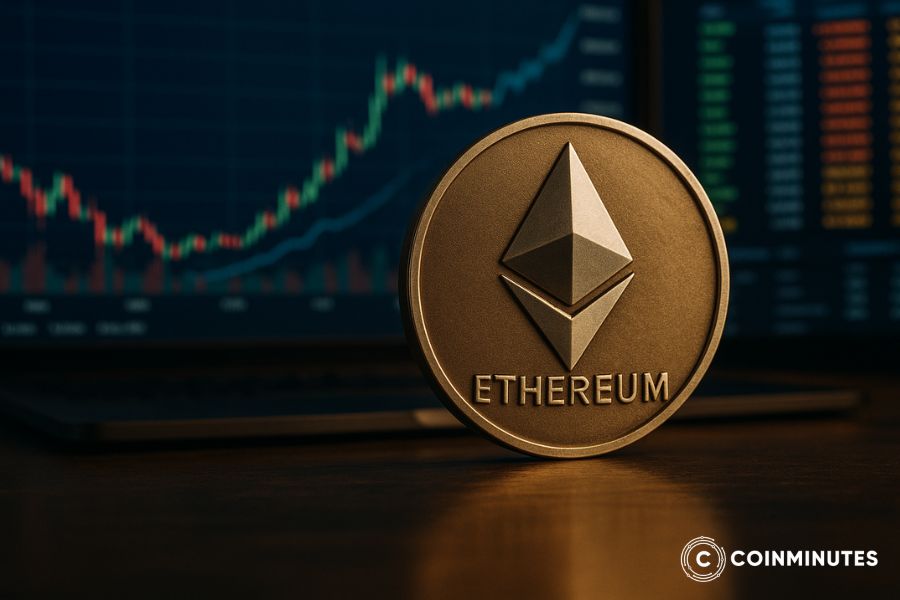
Continue Your Crypto Journey with CoinMinutes
As you can tell, Ethereum is a deep and complex subject. It's a financial asset, a technology platform, and a global community all rolled into one. And it's constantly changing.
Keeping up with it all can feel like a full-time job. But at CoinMinutes, that's our job. We're here to keep breaking down these big topics into simple, clear guides and updates. We believe that a smart and educated crypto user is a safer crypto user.
We hope this guide helped you get a solid handle on what Ethereum is and why so many people are excited about its future. Thanks for reading, and we encourage you to continue your crypto journey with CoinMinutes.
 English
English
 Vietnamese
Vietnamese





